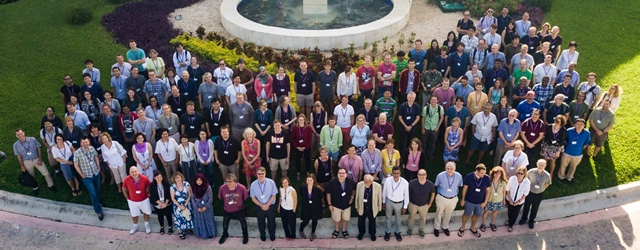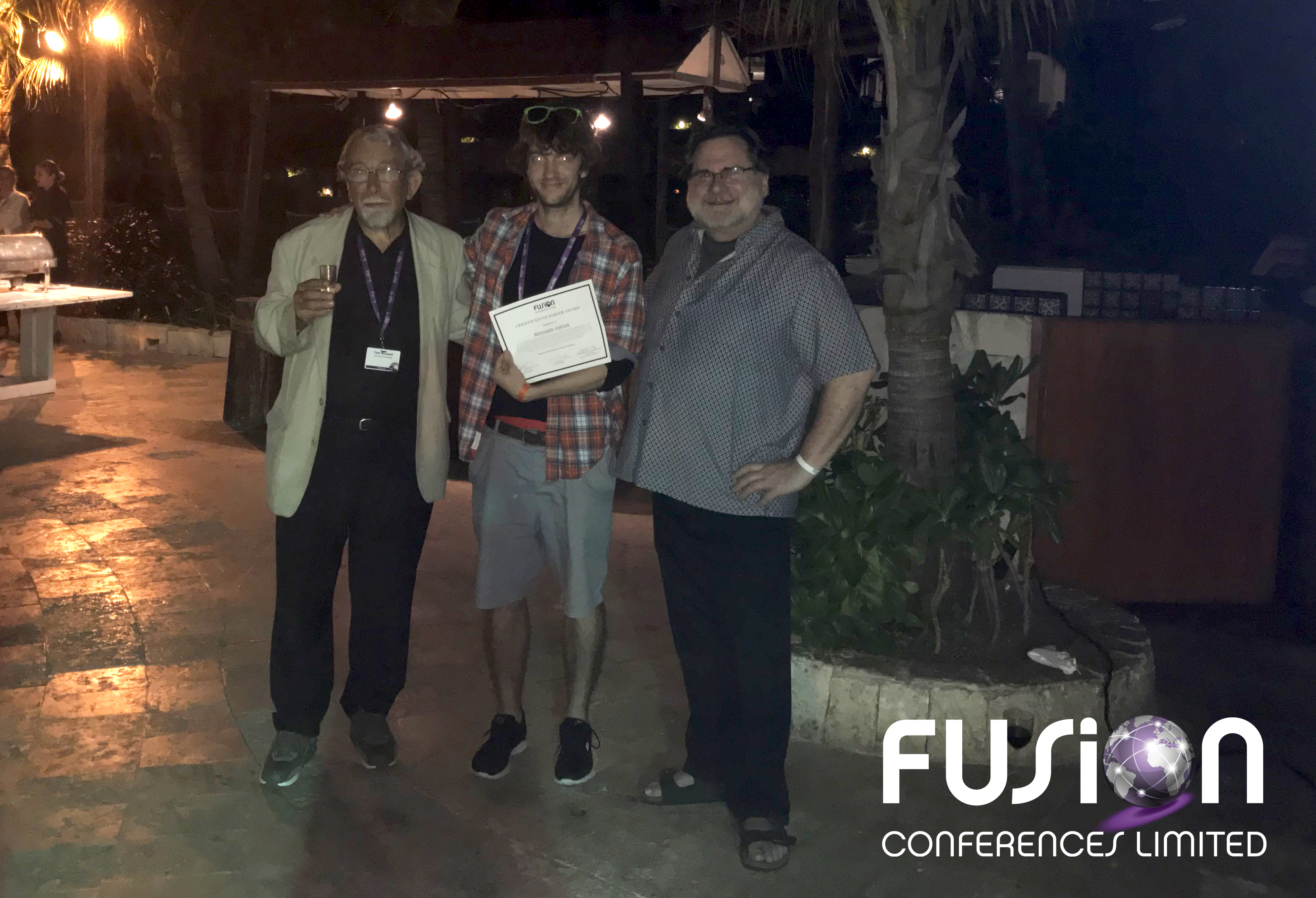3rd Reproductive Aging Conference

Conference Recap: 3rd DNA Replication/Repair Structures and Cancer Conference
The 3rd DNA Replication/Repair Structures and Cancer Conference, which took place in Cancun, Mexico from 11-15 February 2018, centered on developing an actionable mechanistic knowledge of DNA replication and repair responses to stress for advanced cancer intervention strategies. Returning conference chairs, Sir Tom Blundell (FRS, FMedSci, Department of Biochemistry, University of Cambridge, UK) and Dr. John Tainer (Director SIBYLS Advanced Light Source, Professor and Director of Structural Biology, MD Anderson Cancer Center, Houston, Texas, USA) brought to Cancun many of the people driving advances in relevant structural biology and mechanisms, enabling uniquely productive and informative interactions for those working on DNA replication, damage responses and cancer. There was a total of 157 attendees who travelled worldwide to join us; Australia, USA, UK, The Netherlands, Japan, France, Saudi Arabia, China, South Korea, Germany, Italy, Poland, Canada, Sweden and Austria are just a few of the countries that were represented. Talks and poster sessions focused on cutting-edge structural and single-molecule approaches and novel mechanistic insights.
The remarkable stability of the human genome is lost in cancer cells due to the loss of efficient and accurate repair in the context of oncogene-induced replication stress and elevated transcription. DNA replication is furthermore emerging as a surprisingly fragile and complex process requiring fork protection and restart, R-loop resolution, and repair. Unresolved replication and repair intermediates signal apoptosis. The synthetic lethality and essentiality resulting from replication-repair stresses thus suggest repair inhibitors as tools to control pathway selection and damage outcomes and to design advanced therapeutics.
The 2018 meeting focused on structural and mechanistic insights into dynamic protein, DNA and RNA complexes acting in DNA replication and repair events relevant to cancer. The large diverse audience including many internationally distinguished speakers and the lively debates emphasised the importance of the theme. Comments from participants of all career stages emphasised their wish to see the series continue in this format and location.
“You and Tom did a really wonderful job putting together the conference with Laura and her colleagues. The science, discussions and location were all spot-on! I very much enjoyed participating in your conference and hope that I will have the opportunity to doing so again should you organise further events of this type.” Prof. Stephen Jackson (Wellcome Trust/Cancer Research UK Gurdon Institute)
The first day begun with a lively discussion of DNA Replication Machinery chaired by John Tainer and focused on structural features of high fidelity DNA replication and its enforcement. This was presented by an impressive line-up of international speakers. On this first day we had two breaks in the lecture schedule for sessions, expertly chaired by Susan Tsutakawa and Chris Brosey, of Meet the Poster Presenters, where all gave concise introductions and invitations to their poster. The evening concluded with an exciting plenary overview by Bruce Stillman from Cold Spring Harbor Laboratory on the structure, function and human genetics of the origin recognition complex and chromosome duplication.

The second day theme was replication fork stability, including mechanisms for maintaining genome stability at forks and for remodeling stalled replication forks. The following session focused further on sensing & signaling cellular genome instability. Mechanistic aspects were informed by amazing structural insights arising from state of the art techniques, for example of the structures of poly(ADP-ribose) polymerase enzymes. This session culminated in a brilliant plenary talk encompassing advances on cellular responses to DNA double-strand breaks by Steve Jackson of the Wellcome Trust/Cancer Research UK Gurdon Institute. The evening of the second day included sessions on defining & targeting the damage response. The final session, late in the evening but still with full attendance, was introduced by Tom Blundell, describing an opportunity to contribute to a themed volume of Progress in Biophysics and Molecular Biology, to be published by Elsevier.
These exciting sessions included breaks for discussions with refreshments & poster viewing, further sessions to ‘Meet the Poster Presenters’, and a short break for leisure in the afternoon. Some sought relaxing conversations on the beautiful beach 50 meters from the restaurants and lecture room! Discussions often further took place over dinner that could be taken at several lovely restaurants in the hotel.
The third day began with sessions on mutational signatures & mechanisms, focusing on mutagenesis in cancer, the concerted roles of genes in the protection of common fragile sites, the characterization of genomic rearrangements and DNA damage recognition. This session culminated with a fascinating plenary talk from Serena Nik-Zainal of the Wellcome Trust Sanger Institute. She detailed mechanistic insights and clinical applications of advances emerging from mutational signatures.
After a snorkeling expedition for some of the more energetic participants and informal afternoon discussions by others, the talks focused on DNA double-strand-break repair through Non-Homologous End Joining. This session was anchored by many strong talks and especially by the breakthrough new structure of the giant DNA-PK molecule, the largest single chain kinase in the human genome, which furthermore forms a point for assembly of many other components. New methods of investigating DNA end joining using proteomics-grade strategies for integrative structural biology and modelling were discussed, as well as exciting single-molecule analyses by Terence Strick measuring the time frame and energetics from the core and added components for this multicomponent DNA repair system.
The fourth day, Wednesday, started with talks and discussions of resection, repair and break signaling in homologous recombination of DNA double-strand breaks. One of the highlights was the way rad51 filament defines remodeling by human Rad51c-XRCC3. The discussion continued with a focus on DNA intermediates in repair and replication, and a discussion of mutagenesis, culminating with a very stimulating integrative plenary talk by Stephen West of the Francis Crick Institute on unresolved DNA intermediates as a source of DNA breaks and chromosome aberrations. The evening session continued with talks and discussions on coupling repair to replication and mitosis, with many stand out talks including those by Titia Sixma of the Netherlands Cancer Institute on structural biology of DNA mismatch repair and by Susan Lees-Miller of University of Calgary on non-repair functions of DNA-PKcs. All of this discussion included a look behind the scenes on publishing with the Nature research journals by Beth Moorefield that was followed by a gala dinner and poster awards (see below).
Despite the intensive schedule in talks and interactions, the final day continued with the same intensity of brilliant and exciting presentations on damage interactions with expression & chromatin. Talks included DNA damage sensor roles during base excision repair, structural analysis of protein DNA remodeler and structure and regulation of human ino80 complex by Dale Wigley. John Tainer from the MD Anderson Cancer Center completed the meeting with an exciting thought piece on the “rise of the molecular machines with cancer implications”.
The closing comments from the organisers expressed their happiness with the range of superb talks – probably the most intense five day meeting many have had for a long time and a great learning period. The meeting was attended by an enthusiastic and diverse audience, both with respect to stage of career, gender and nationality. We were proud to see that 20% of our attendees were students and this was due to the special rate offered by Fusion enabling many students to attend at cost price when accompanied by an academic.
The topic of DNA damage response and repair and its interface with replication remains an exciting area of research, still with many unanswered questions.
“Thank you, and all the organisers, so much for this wonderful opportunity to meet other researchers and make valuable contacts. I won't hesitate to say that this is one of the best conferences I've been to so far. Organisation is perfect and I will definitely want to attend in next edition…” Dr. Jacek Kabzinski (Medical University of Lodz)
Congratulations to all of those who received an award, details of which can be found below.
Organisers Short Talk Award
Noa Lamm-Shale (Children's Medical Research Institute)
Ravindra Amunugama (Harvard Medical School)
Poster Prize Awards
Zhe Yang (The Rockefeller University)
Taiana Maia de Oliveira (AstraZeneca)
Marcel Tuppi (Goethe-Universität Frankfurt)
Harshad Ghodke (University of Wollongong)
Benjamin Foster (IFE, Helmholtz Zentrum München)
Elizabeth O'Brien (California Institute of Technology)
FEBS Short Talk Award
Domi Baretic (MRC Laboratory of Molecular Biology)
Franz Klein (MFPL, University of Vienna)
We thank AstraZeneca for generously supporting this meeting and emphasising the importance of knowledge exchange between academia and industry, which is critical in our area and in this case can assist in the early development of new therapeutics for cancer. We also thank all our other wonderful sponsors; TESARO, Oncotarget, Repare Therapeutics, DECTRIS, artios, FEBS, Worldwide Cancer Research and the University of Pittsburgh. Their support was greatly appreciated and enabled us to fund many participants who otherwise may not have been able to attend. Special thanks to Elsevier for supporting the meeting and publishing the themed volume on selected talks.
The meeting was expertly organized, smoothly run, and supported by Fusion Conferences, Ltd. We thank Laura Trundle and her team for their helpful interactions with organisers and participants.

Registration is now open for the 4th DNA Repair/Replication Structures and Cancer Conference. Click here to visit the webpage.
